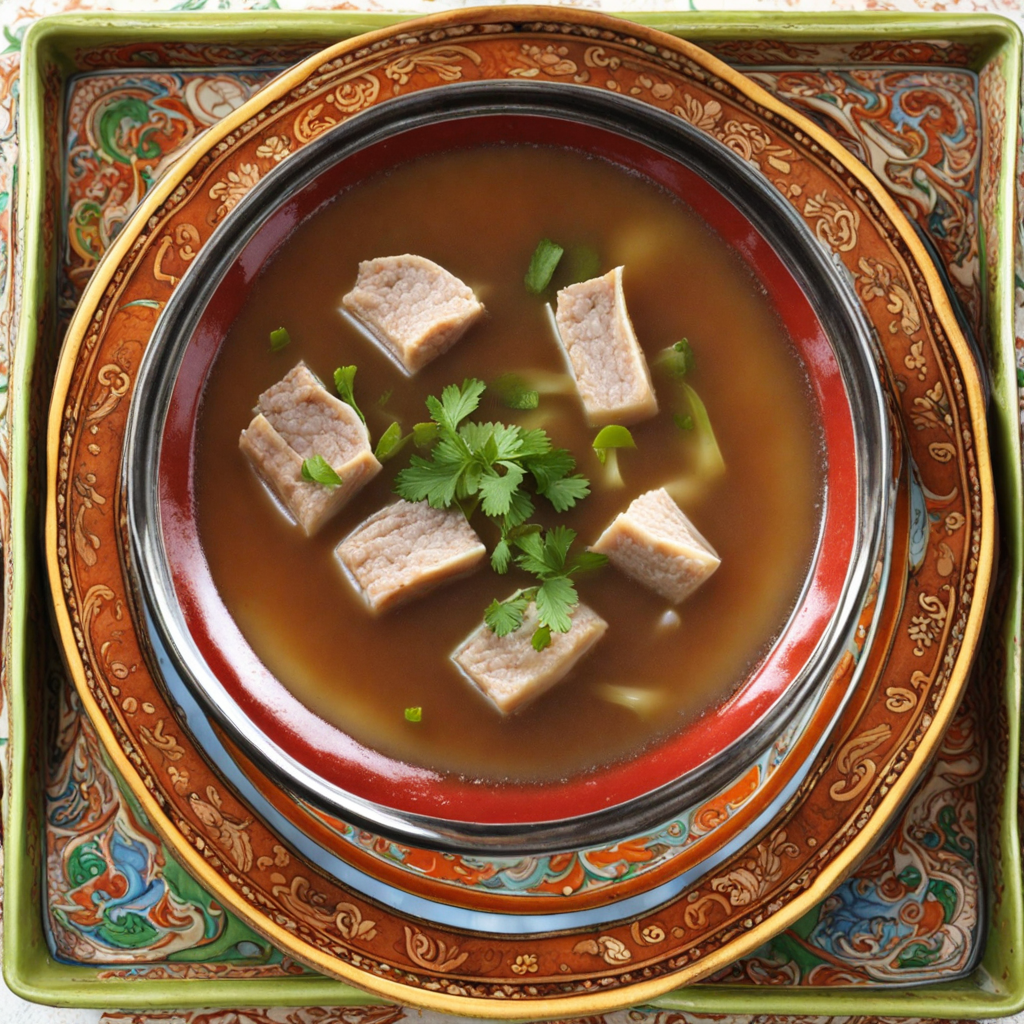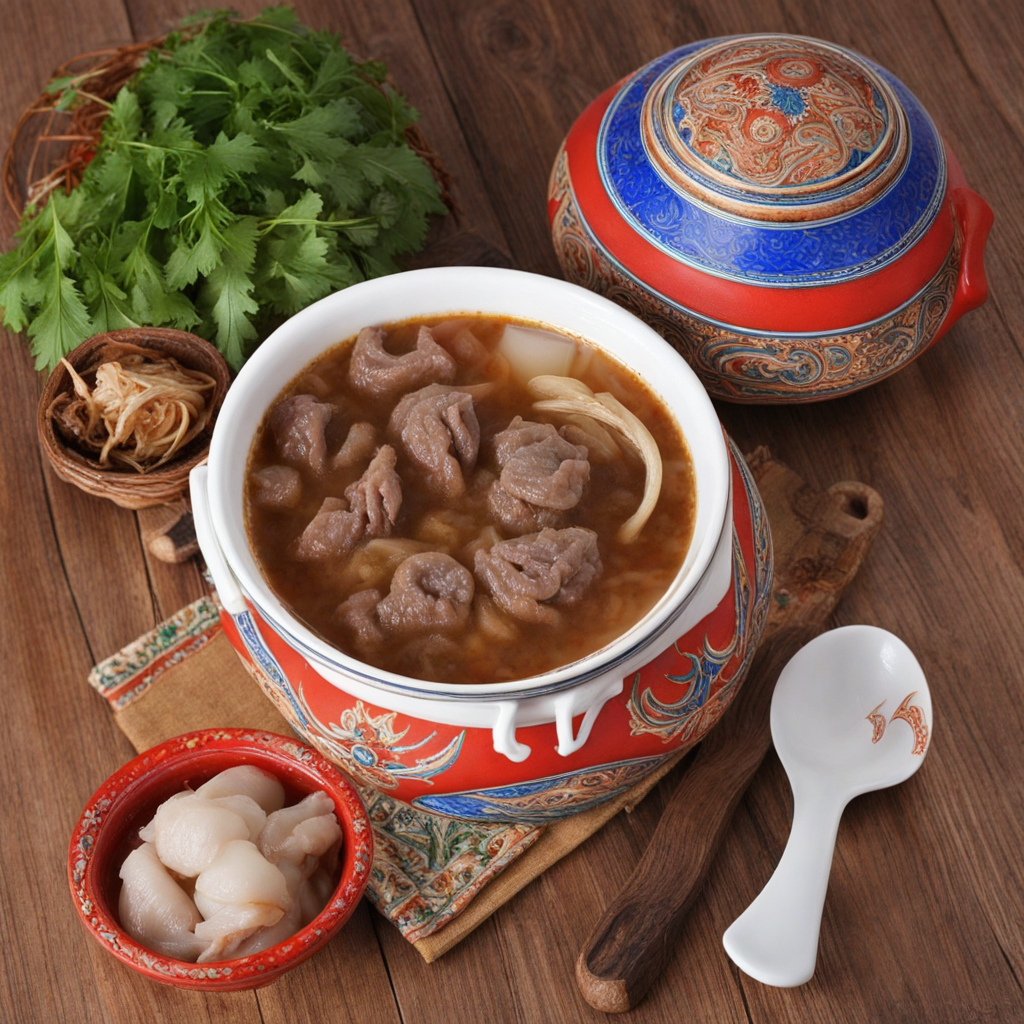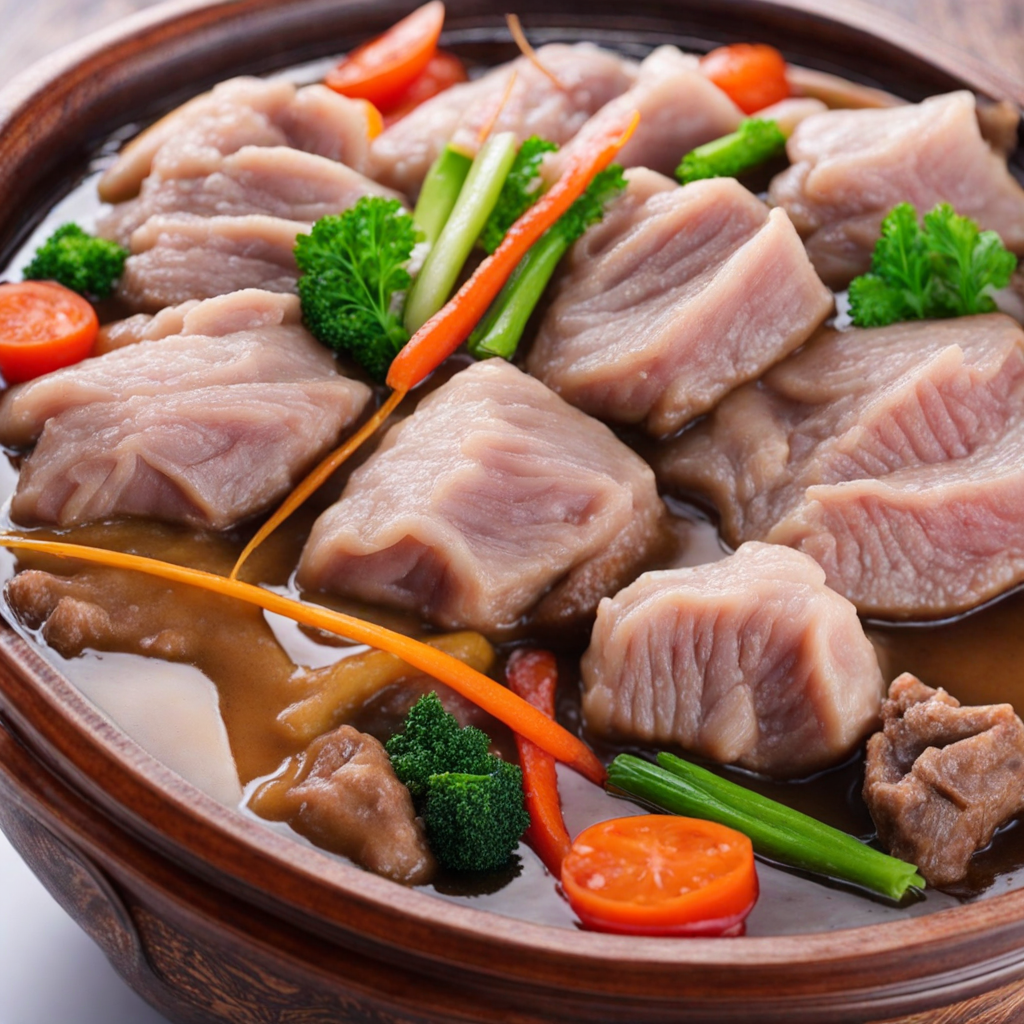Nermel Sakhaltakh
Nermel Sakhaltakh is a traditional Mongolian dish that captivates the palate with its unique combination of flavors and textures. This dish typically features a base of finely ground grains, often barley or wheat, which are then mixed with a variety of hearty ingredients. The grains are cooked to a comforting softness, providing a delightful contrast to the savory fillings, which can include a medley of meats such as lamb, beef, or even horse meat, seasoned with aromatic herbs and spices that reflect the rich culinary heritage of Mongolia. The preparation of Nermel Sakhaltakh is a labor of love, often involving the meticulous process of layering the ingredients. The meats are usually marinated and slow-cooked until they are tender, allowing the flavors to meld beautifully. Once the filling is ready, it is enveloped in the grain mixture, creating a dish that is both filling and nourishing. The addition of root vegetables, such as carrots and potatoes, can enhance the dish, lending sweetness and earthiness that perfectly balance the savory notes. When served, Nermel Sakhaltakh is often accompanied by a rich, tangy sauce or a drizzle of homemade yogurt, elevating the overall experience. The dish is not only a celebration of Mongolian culture but also an invitation to explore the rustic yet refined flavors that come from the vast steppes. Each bite offers a taste of Mongolia's pastoral life, making it a must-try for anyone eager to expand their culinary horizons and discover the essence of this unique cuisine.
How It Became This Dish
The History of Нэрмэл сахалтах: A Culinary Treasure of Mongolia In the heart of Central Asia, Mongolia's vast steppes have long been home to a nomadic culture that is intimately connected to its land and livestock. Among the many culinary delights that arise from this deep-rooted heritage, one dish that stands out is Нэрмэл сахалтах (Nermel sakhaltakh), a traditional Mongolian dish that exemplifies the resourcefulness and adaptability of its people. Understanding the origin, cultural significance, and evolution of Нэрмэл сахалтах provides a fascinating glimpse into Mongolia's rich gastronomic tapestry. #### Origins of Нэрмэл сахалтах The term Нэрмэл сахалтах can be roughly translated to “stewed meat” or “meat with vegetables” in Mongolian. The dish is believed to have originated during the nomadic lifestyle of the Mongolian tribes, which dates back thousands of years. Historically, Mongolians were pastoralists, relying heavily on livestock such as sheep, goats, and horses for sustenance. As a result, meat has always been a central component of their diet, with dishes designed to maximize flavor and nutritional value while also accommodating the constraints of a nomadic lifestyle. The first recorded mentions of stewed meat in Mongolian literature can be traced back to the time of Genghis Khan in the 13th century. His conquests opened trade routes and introduced new ingredients and cooking techniques, though the essence of traditional dishes remained largely unchanged. Нэрмэл сахалтах is a reflection of this blend, as it incorporates local ingredients such as mutton or beef, root vegetables, and sometimes grains, highlighting the resourcefulness required in the harsh climate of Mongolia. #### Cultural Significance Нэрмэл сахалтах holds considerable cultural significance in Mongolia, serving as more than just a meal; it is a symbol of hospitality and community. The preparation and consumption of this dish often occur during gatherings and celebrations, reinforcing social bonds among family and friends. Traditionally, a pot of Нэрмэл сахалтах would be prepared over an open fire, with the rich aroma wafting through the air, inviting neighbors and passersby to join in the feast. In Mongolian culture, food is deeply intertwined with identity and tradition. The communal aspect of sharing Нэрмэл сахалтах is reflective of the nomadic lifestyle—where collaboration and mutual support within communities are paramount for survival. It is customary for families to prepare larger quantities to ensure that there is enough for everyone, demonstrating the value placed on generosity and togetherness. Furthermore, Нэрмэл сахалтах is often prepared during significant life events such as weddings, festivals, and seasonal celebrations. It signifies abundance and prosperity, and its presence at a gathering is a blessing. Traditionally, the dish is accompanied by fermented dairy products, which are staples in the Mongolian diet, showcasing the harmonious relationship between meat and dairy that characterizes the culinary landscape of Mongolia. #### Development Over Time As Mongolia transitioned from a predominantly nomadic society to a more settled one during the 20th century, the preparation of Нэрмэл сахалтах evolved while still retaining its core elements. With the establishment of the Mongolian People's Republic in 1924, and the subsequent collectivization of agriculture, the availability of ingredients changed. Urbanization and the rise of markets allowed for a wider variety of vegetables and spices to be incorporated into the dish, enhancing its flavor profile. In contemporary Mongolia, Нэрмэл сахалтах has seen further adaptations, influenced by globalization and modern culinary practices. While the traditional methods of cooking over an open flame remain popular, many households now utilize gas or electric stoves, making the preparation more accessible and efficient. The dish has also become a staple in restaurants, catering to both locals and tourists, which has contributed to its wider recognition and appreciation beyond Mongolia's borders. Additionally, health consciousness has influenced the contemporary version of Нэрмэл сахалтах. Chefs and home cooks alike are increasingly incorporating organic vegetables and reducing the amount of fat used in the dish, reflecting a global trend towards healthier eating. This adaptation ensures that Нэрмэл сахалтах remains relevant in an evolving food landscape while preserving the essence of its traditional roots. #### The Modern Culinary Scene In recent years, there has been a resurgence of interest in traditional Mongolian cuisine, with chefs taking pride in reviving and reinterpreting classic dishes like Нэрмэл сахалтах. Culinary festivals and competitions have emerged, showcasing Mongolian food and encouraging innovation while respecting traditional practices. This movement has led to a new generation of chefs who are passionate about celebrating Mongolia's culinary heritage. Moreover, the rise of the digital age has made it easier for people to share recipes and cooking techniques online, further promoting Нэрмэл сахалтах among a global audience. Social media platforms have become avenues for Mongolian food enthusiasts to showcase their culinary skills, share their family recipes, and educate others about the cultural significance of dishes like Нэрмэл сахалтах. #### Conclusion Нэрмэл сахалтах is more than just a dish; it is a culinary emblem of Mongolia’s historical journey, cultural identity, and communal values. From its origins in the nomadic lifestyle to its evolution in modern society, Нэрмэл сахалтах illustrates the adaptability and resilience of Mongolian cuisine. It serves as a delicious reminder of the importance of tradition, community, and the enduring bond between people and the land they inhabit. As the world continues to change, Нэрмэл сахалтах remains a cherished part of Mongolia's culinary heritage, inviting all who experience it to partake in its rich history and cultural significance.
You may like
Discover local flavors from Mongolia







